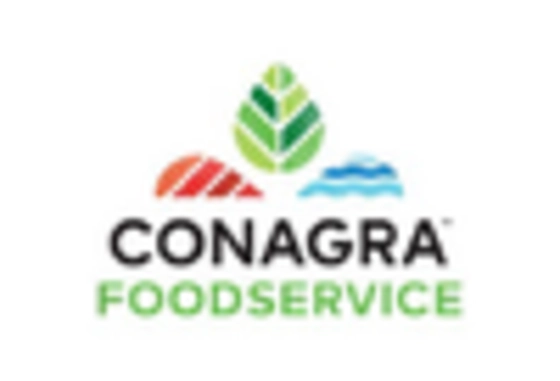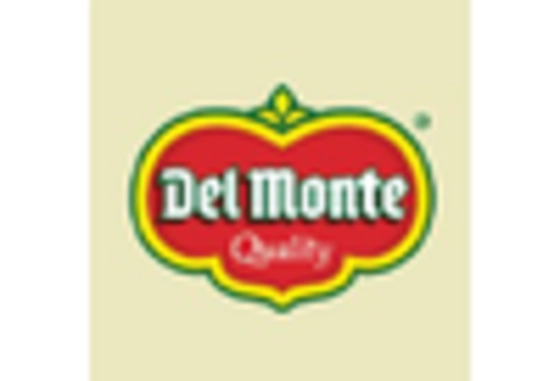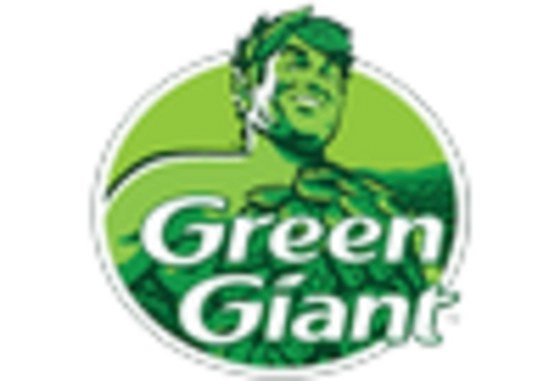Rising Demand for Healthy Snacks
The increasing consumer inclination towards health-conscious eating habits appears to be a primary driver for the Processed Fruits And Vegetables Market. As individuals seek nutritious alternatives to traditional snacks, processed fruits and vegetables are gaining traction. According to recent data, the market for healthy snacks is projected to grow at a compound annual growth rate of approximately 8% over the next five years. This trend suggests that consumers are prioritizing products that offer convenience without compromising on health benefits. The Processed Fruits And Vegetables Market is well-positioned to capitalize on this shift, as these products often contain essential vitamins and minerals, appealing to a broad demographic. Furthermore, the rise of snacking culture among younger generations may further bolster demand, indicating a potential for sustained growth in this sector.
Expansion of Distribution Channels
The expansion of distribution channels is emerging as a crucial driver for the Processed Fruits And Vegetables Market. With the rise of e-commerce and online grocery shopping, consumers now have greater access to a variety of processed fruit and vegetable products. This shift in purchasing behavior is likely to enhance market reach and facilitate the introduction of new products. Retailers are increasingly investing in their online platforms, which may lead to improved visibility for processed fruits and vegetables. Additionally, partnerships with food delivery services and subscription boxes are becoming more common, further broadening distribution networks. As a result, the Processed Fruits And Vegetables Market could experience increased sales and brand loyalty, as consumers find it more convenient to purchase their preferred products.
Growing Popularity of Plant-Based Diets
The rising trend of plant-based diets is emerging as a significant driver for the Processed Fruits And Vegetables Market. As more consumers adopt vegetarian and vegan lifestyles, the demand for plant-based products, including processed fruits and vegetables, is expected to surge. Market analysis indicates that the plant-based food sector is anticipated to reach a valuation of over 74 billion dollars by 2027, reflecting a robust growth trajectory. This shift towards plant-based eating is often motivated by health, environmental, and ethical considerations, which align well with the offerings of the Processed Fruits And Vegetables Market. Consequently, manufacturers may find opportunities to innovate and expand their product lines to meet the evolving preferences of health-conscious consumers, thereby driving market growth.
Increased Focus on Food Safety and Quality
The heightened awareness surrounding food safety and quality is likely to influence consumer choices within the Processed Fruits And Vegetables Market. As foodborne illnesses and contamination concerns persist, consumers are becoming more discerning about the products they purchase. Regulatory bodies are also enforcing stricter safety standards, compelling manufacturers to prioritize quality assurance in their processing methods. This trend may lead to increased investments in quality control measures and certifications, which can enhance brand reputation and consumer trust. Furthermore, products that emphasize organic or non-GMO ingredients are gaining popularity, suggesting that consumers are willing to pay a premium for perceived quality. The Processed Fruits And Vegetables Market must adapt to these evolving standards to remain competitive and meet consumer expectations.
Technological Advancements in Processing Techniques
Technological innovations in food processing are likely to enhance the quality and shelf life of processed fruits and vegetables, thereby driving the Processed Fruits And Vegetables Market. Advanced techniques such as freeze-drying, high-pressure processing, and improved packaging solutions are being adopted to maintain nutritional value while extending product longevity. For instance, the use of modified atmosphere packaging can significantly reduce spoilage rates, which is crucial for maintaining product appeal. As these technologies become more accessible, manufacturers may experience reduced production costs and increased efficiency. This could lead to a broader range of products entering the market, catering to diverse consumer preferences. The Processed Fruits And Vegetables Market stands to benefit from these advancements, as they not only improve product quality but also enhance consumer trust in processed food options.


















Leave a Comment